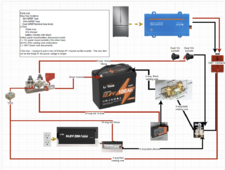Dennis Marks
New old guy
What a ride. Just trying to get into the solar world. This is my 2nd small unit. I have a Redodo 100ah battery, PWM ( brand name) charge controller and a 1100 watt JJN inverter. Running great until i decided to add a battery shut off switch and dropped nut that landed between the pos and negative connecting bars on back of inverter. Had to get screw driver to pry unstuck….(stupid rookie). Have taken the system completely down at least 5 times, left unconnected overnight and E14 looks back at me every time. HELP,



